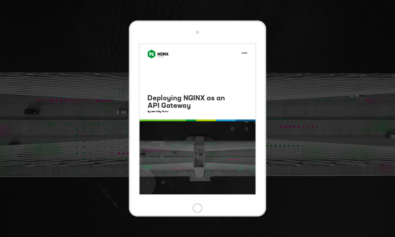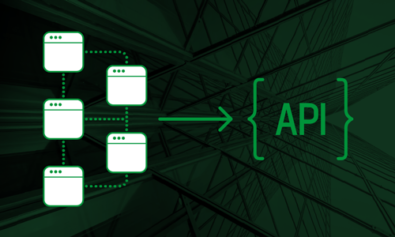Cookie preferences
Accept cookies for analytics, social media, and advertising, or learn more and adjust your preferences. These cookies are on by default for visitors outside the UK and EEA. Privacy Notice.
Secure and High-Performance API Gateway
Designed for distributed architectures and DevOps practices, NGINX Plus acts as a reverse proxy and securely accepts API calls from clients and routes them to the appropriate backend services. It delivers APIs with ultra-low latency and easily scales to process more than 30,000 requests per second.
Why Use NGINX Plus as an API Gateway?
Deploy across any cloud, any architecture, and any modern protocol with a platform-agnostic API gateway.
- Modern protocols – Deliver any HTTP based API including synchronous APIs (REST, gRPC, GraphQL, SOAP, and more) and asynchronous APIs (WebSockets, webhooks, and more).
- Platform–agnostic – Deploy on bare metal, in Kubernetes, on-premises, in the cloud, or at the edge
- Extensible – Write custom middleware or transform requests with the NGINX JavaScript module
Deliver APIs with speed and scale using the only API gateway capable of processing over 30,000 requests per second with 1000x lower latency than the competition.
- High availability – Avoid single points of failure with active-active or active-passive high availability (HA) clusters
- Service discovery – Automate service discovery and load balancing for API runtimes using DNS
- Advanced routing – Optimize delivery with A/B testing, canary deployments, blue-green deployments, and other techniques
Access real-time metrics and historic data to gain visibility and insights into API traffic.
- Active health checks – Proactively monitor your services to detect and get ahead of issues
- Real-time monitoring – Create live dashboards and access more than 200 real-time metrics
- Unified view – Export logs and metrics to your preferred APM provider
Protect APIs and backend services with policies for authentication, authorization, rate limiting, and more.
- Access control – Authentication and authorization for APIs using methods like OpenID Connect (OIDC) for single sign-on (SSO), OAuth, JWTs and more
- Rate limiting – Ensure your backend services are not overwhelmed by buggy code or malicious API clients by applying rate limits based on any attribute of the request
- Enforce request methods – Protect services by enforcing specific request methods, like
GET, to ensure your service is read-only
Learn More About NGINX Plus

Ebook
Deploying NGINX as an API Gateway
This free eBook explains how to leverage NGINX as an API gateway. It shows you, step-by-step, how to set up, configure, and secure an API gateway for routing both HTTP-based and gRPC APIs.

Blog
Building Microservices: Using an API Gateway
Learn why and how to build microservices using API gateways for communication between clients and applications.

Blog
Choosing the Right API Gateway Pattern for Effective API Delivery
APIs are increasingly critical to many businesses, so choosing the right API gateway pattern for your application delivery infrastructure is key. Here we explore five such patterns: edge...